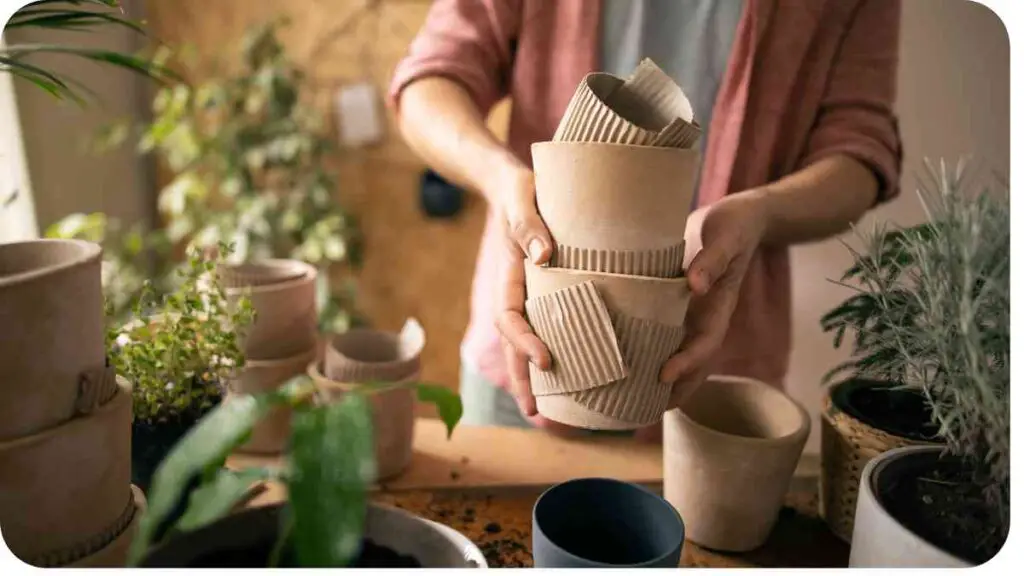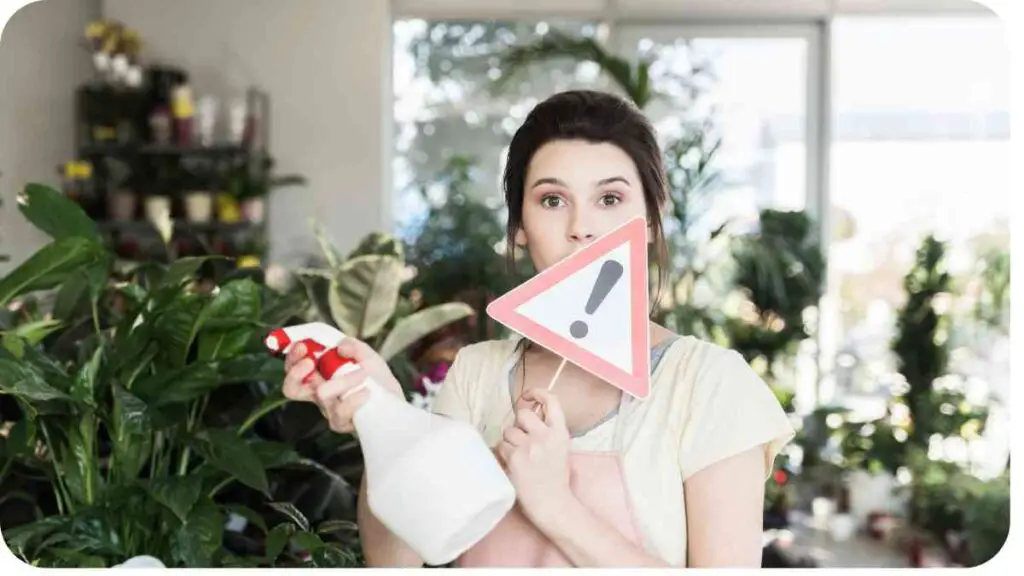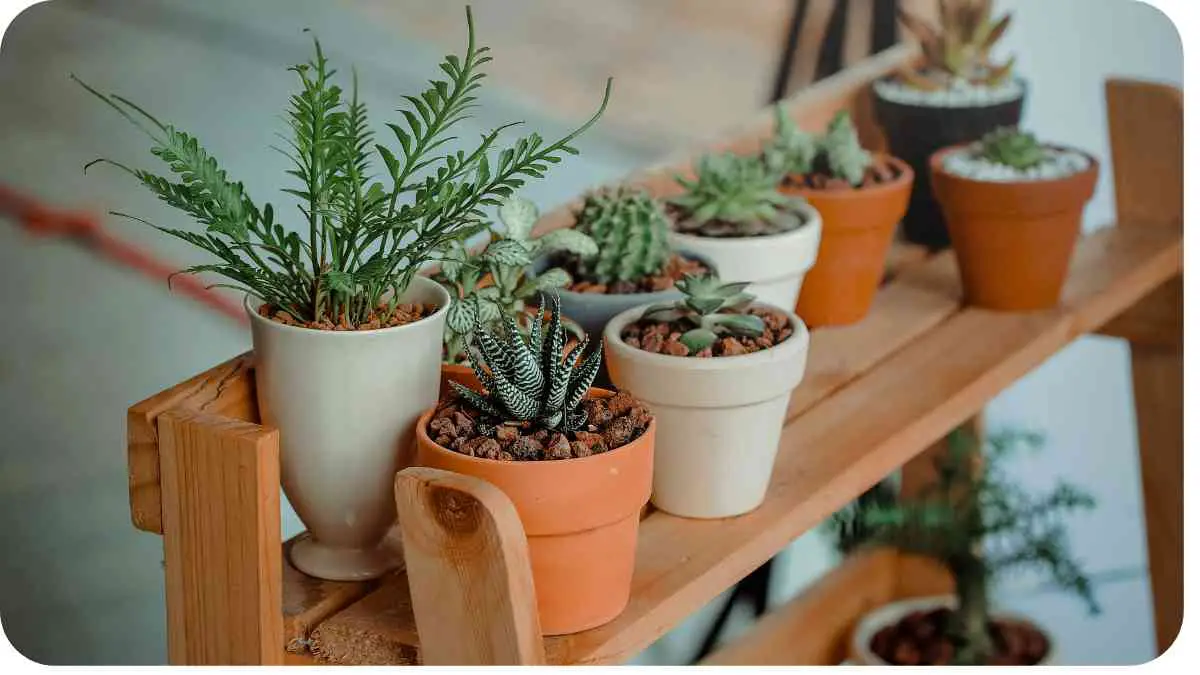Potted plants can add charm, color, and life to any space, whether indoors or outdoors. However, achieving that picture-perfect look requires more than just sticking a plant in a pot and hoping for the best.
In this comprehensive guide, we’ll explore the various aspects of making your potted plants not just thriving but visually stunning. From selecting the right plants to choosing the perfect pot and implementing maintenance strategies, we’ve got you covered.
| Takeaways |
|---|
| Choose plants and pots wisely to create visually stunning displays. |
| Pay attention to lighting, watering, and soil needs for optimal plant health. |
| Regular maintenance, including pruning and grooming, is essential for plant beauty. |
| Get creative with accessories and display ideas to enhance the overall look of your potted garden. |
| Troubleshoot issues promptly to prevent further damage to your plants. |
| Embrace sustainable practices to minimize environmental impact and promote long-term plant health. |
Table 1: Types of Potted Plants for Different Environments
| Environment | Recommended Plants |
|---|---|
| Indoor | Peace Lily, Snake Plant |
| Outdoor | Petunias, Geraniums |
| Shade | Ferns, Begonias |
| Sunny | Succulents, Lavender |
2. Choosing the Right Plants

Selecting the right plants is the first step in making your potted garden visually appealing. Consider factors like the available light, space constraints, and your personal preferences when making your selections.
Choosing the right potting mix is crucial for vibrant flowers. Ultimate Guide provides insights on soil composition and nutrients, ensuring your plants thrive.
Table 2: Factors to Consider When Choosing Potted Plants
| Factor | Consideration |
|---|---|
| Light Requirements | Full sun, partial sun, shade |
| Size | Mature height and spread of the plant |
| Water Needs | Drought-tolerant vs. water-loving plants |
| Maintenance | Pruning requirements, susceptibility to pests and diseases, growth rate |
When choosing plants, aim for a variety of textures, colors, and growth habits to create visual interest in your arrangement.
3. Selecting the Perfect Pot
The choice of pot plays a crucial role in the overall aesthetics of your potted garden. Beyond just functionality, pots come in various materials, shapes, and sizes, each impacting the visual appeal of your plants.
Table 3: Types of Pots and Their Characteristics
| Pot Material | Characteristics |
|---|---|
| Terracotta | Classic look, porous material that allows airflow and water evaporation |
| Ceramic | Wide range of colors and designs, less porous than terracotta, retains moisture well |
| Plastic | Lightweight, durable, and affordable, comes in various styles and colors |
| Concrete | Modern and minimalist look, heavy and sturdy, retains moisture, suitable for large plants |
Consider the style and theme of your space when choosing pots, and don’t be afraid to mix and match different materials for added visual interest.
4. Understanding Lighting Needs

Proper lighting is essential for the health and beauty of your potted plants. Different plants have varying light requirements, so it’s crucial to understand the lighting conditions in your space and choose plants accordingly.
Well-draining soil is essential for healthy indoor plants. Discover Ultimate Guide to optimize moisture levels and prevent root rot, keeping your plants happy.
Table 4: Lighting Requirements for Common Potted Plants
| Plant | Light Requirements |
|---|---|
| Succulents | Full sun to partial shade |
| Ferns | Indirect or filtered light |
| Flowering Plants | Full sun for optimal blooming |
| Foliage Plants | Bright, indirect light |
Assess the light levels in your space throughout the day to determine the best placement for your plants. Consider using artificial lighting for areas with insufficient natural light.
5. Watering and Drainage Tips
Proper watering is vital for the health and beauty of your potted plants. Overwatering can lead to root rot, while underwatering can cause wilting and nutrient deficiencies. Here are some tips to ensure your plants receive the right amount of water:
Table 5: Watering Guidelines for Potted Plants
| Plant Type | Watering Frequency | Signs of Overwatering | Signs of Underwatering |
|---|---|---|---|
| Succulents | Allow soil to dry between waterings | Yellowing leaves, mushy stems | Wrinkled or shriveled leaves |
| Tropical Plants | Keep soil evenly moist | Wilting, yellowing leaves | Dry, crispy leaves |
| Cacti | Water sparingly, allow soil to dry completely | Soft, discolored stems | Shriveled, puckered skin |
Ensure pots have adequate drainage holes to prevent waterlogging, and use a well-draining potting mix to promote healthy root growth.
Limited space? No problem! Learn how to Maximize Space with vertical gardening solutions, utilizing walls and towers to create lush greenery.
6. Soil Matters: Choosing the Best Mix
The right soil mix provides essential nutrients and optimal drainage for your potted plants. Different plants have specific soil requirements, so it’s essential to choose the right mix to support their growth.
Table 6: Common Ingredients in Potting Mixes
| Ingredient | Purpose |
|---|---|
| Peat moss | Retains moisture, improves soil structure |
| Perlite | Enhances drainage, prevents soil compaction |
| Vermiculite | Improves aeration, retains moisture |
| Compost | Adds organic matter and nutrients to the soil |
| Sand | Improves drainage, prevents soil from becoming too compact |
Choose a potting mix formulated for the specific needs of your plants, such as cacti and succulent mix for desert plants or African violet mix for moisture-loving plants.
7. Fertilizing for Growth and Beauty
Fertilizing your potted plants is essential for providing them with the necessary nutrients to thrive and maintain their beauty. However, it’s crucial to use the right type and amount of fertilizer to avoid damaging your plants.
Table 7: Types of Fertilizers and Their Application
| Fertilizer Type | Application Frequency | Nutrient Content | Suitable Plants |
|---|---|---|---|
| Liquid | Every 2-4 weeks | Balanced N-P-K ratio | Flowering and foliage plants |
| Granular | Once every 2-3 months | Slow-release formula | Outdoor plants, shrubs, trees |
| Organic | Every 4-6 weeks | Natural ingredients | Edible plants, herbs |
Always follow the instructions on the fertilizer package and avoid over-fertilizing, which can lead to nutrient imbalances and burn your plants’ roots.
8. Pruning and Grooming Techniques
Regular pruning and grooming help maintain the shape, health, and beauty of your potted plants. By removing dead or overgrown foliage and encouraging new growth, you can enhance the overall appearance of your plant collection.
Turn everyday items into unique planters with these creative ideas. Explore Transforming Items for inspiration to elevate your garden decor on a budget.
Table 8: Pruning and Grooming Tips for Potted Plants
| Technique | Purpose | Suitable Plants |
|---|---|---|
| Deadheading | Removing spent flowers to encourage new blooms | Flowering annuals, perennials |
| Pinching | Removing the tips of stems to promote bushier growth | Herbs, annuals, perennials |
| Thinning | Removing excess growth to improve air circulation | Foliage plants, shrubs |
| Trimming | Cutting back overgrown or leggy stems | All types of potted plants |
Regular grooming also helps prevent pest infestations and diseases by removing debris and improving airflow around the plants.
9. Enhancing with Accessories
Accessorizing your potted plants can take their beauty to the next level and add personality to your space. From decorative pots to artistic stakes, there are countless accessories to choose from to complement your plant collection.
Table 9: Popular Accessories for Potted Plants
| Accessory | Purpose | Suitable Plants |
|---|---|---|
| Decorative Pots | Add visual interest and complement plant colors | All types of potted plants |
| Plant Stands | Elevate plants to different heights for a dynamic display | Tall plants, trailing vines |
| Plant Markers | Identify plants and add a decorative touch | Herbs, vegetables, flowers |
| Fairy Lights | Create a magical ambiance in the evening | Succulents, ferns, flowering plants |
Experiment with different accessories to find combinations that reflect your style and enhance the beauty of your potted garden.
10. Dealing with Pests and Diseases

Pests and diseases can wreak havoc on your potted plants, compromising their beauty and health. Early detection and prompt action are essential to prevent infestations and keep your plants thriving.
Table 10: Common Pests and Diseases in Potted Plants
| Pest/Disease | Symptoms | Treatment |
|---|---|---|
| Aphids | Small, soft-bodied insects on leaves | Spray with insecticidal soap |
| Fungal Leaf Spot | Dark spots or lesions on leaves | Remove affected leaves, improve airflow |
| Spider Mites | Fine webbing and yellowing leaves | Rinse with water, apply neem oil |
| Root Rot | Wilting, yellowing leaves, rotting roots | Repot in well-draining soil, reduce watering |
Regularly inspect your plants for signs of pests and diseases, and quarantine any affected plants to prevent the spread to others.
Achieve a beautiful garden oasis without breaking the bank. Discover Hacks for a Lush Oasis for cost-effective tips to enhance your outdoor space and enjoy stunning greenery.
11. Seasonal Care Guide
Different seasons bring unique challenges and opportunities for caring for your potted plants. Adjusting your care routine based on the time of year ensures your plants thrive year-round.
Table 11: Seasonal Care Tips for Potted Plants
| Season | Care Tasks |
|---|---|
| Spring | Repotting, fertilizing, pruning for new growth |
| Summer | Watering more frequently, providing shade |
| Fall | Decreasing watering, bringing tender plants indoors |
| Winter | Protecting plants from frost, reducing watering |
Be mindful of temperature fluctuations and daylight hours, as these factors can impact your plants’ growth and health.
12. Creative Display Ideas
Elevate the beauty of your potted plants by showcasing them in creative and eye-catching displays. Whether you have limited space or want to make a bold statement, there are endless possibilities for arranging your plants.
Table 12: Creative Display Ideas for Potted Plants
| Display Idea | Description | Suitable Plants |
|---|---|---|
| Vertical Gardens | Utilize wall space with hanging planters or mounted shelves | Trailing vines, succulents |
| Terrariums | Create miniature landscapes in glass containers with layers of soil and rocks | Mosses, ferns, air plants |
| Group Plantings | Arrange plants in clusters of varying heights and textures | Mix of foliage and flowering plants |
| Theme Gardens | Design themed displays such as herb gardens or succulent collections | Plants with similar care needs |
Experiment with different arrangements and containers to create visual interest and express your personal style.
13. Troubleshooting Common Issues
Even with proper care, potted plants can encounter various issues that affect their health and appearance. Knowing how to troubleshoot these issues promptly can help prevent further damage and restore your plants to their former beauty.
Table 13: Troubleshooting Guide for Potted Plants
| Issue | Symptoms | Solutions |
|---|---|---|
| Yellowing Leaves | Lack of water, nutrient deficiency | Adjust watering schedule, fertilize as needed |
| Wilting | Underwatering, root rot | Check soil moisture, adjust watering practices |
| Leggy Growth | Insufficient light | Move plants to a brighter location |
| Mold or Mildew | Excess moisture, poor airflow | Improve drainage, increase ventilation |
Regularly monitor your plants for any signs of distress and take proactive measures to address issues before they escalate.
14. Sustainable Practices
Incorporating sustainable practices into your potted plant care routine not only benefits the environment but also promotes the long-term health and beauty of your plants. By minimizing waste and conserving resources, you can create a more eco-friendly garden space.
Table 14: Sustainable Practices for Potted Plant Care
| Practice | Description | Benefits |
|---|---|---|
| Water Conservation | Collect and reuse rainwater for watering plants | Reduces water consumption |
| Composting | Create compost from kitchen scraps and plant waste | Provides nutrient-rich soil amendment |
| Organic Pest Control | Use natural methods such as neem oil or companion planting | Avoids harmful chemicals |
| Repurposing Containers | Upcycle old containers into new planters or garden decorations | Reduces waste, adds aesthetic value |
By incorporating sustainable practices into your gardening routine, you can create a more environmentally friendly and rewarding experience.
15. Conclusion
Creating visually stunning potted plants is a rewarding endeavor that enhances the beauty of your living space while providing numerous benefits for your well-being. By following the tips and techniques outlined in this guide, you can transform your potted garden into a captivating oasis of greenery and color.
From selecting the right plants and pots to mastering watering and maintenance techniques, each aspect of potted plant care plays a crucial role in achieving optimal beauty and vitality. By incorporating creative displays, troubleshooting common issues, and embracing sustainable practices, you can nurture your plants to their fullest potential while minimizing environmental impact.
Remember to enjoy the journey of caring for your potted plants and celebrate the beauty they bring to your home. With dedication, patience, and a touch of creativity, you can create a stunning botanical paradise that will delight you and your guests for years to come.
Further Reading
- How to Group Container Gardens Together: Learn how to create stunning arrangements by grouping different container gardens together.
- Create Beautiful Outdoor Pots and Planters: Discover tips and ideas for designing eye-catching outdoor pots and planters.
- DIY Pretty Flower Pot Ideas: Explore DIY projects for adding charm and personality to your flower pots.
FAQs
How do I choose the right plants for my potted garden?
For your potted garden, consider factors such as light requirements, space availability, and your personal preferences when selecting plants.
What are some common pests and diseases that affect potted plants?
Pests such as aphids and spider mites, as well as diseases like fungal leaf spot and root rot, can affect potted plants. Regular inspection and prompt treatment are essential for prevention.
How often should I water my potted plants?
The frequency of watering depends on factors such as plant type, pot size, and environmental conditions. Generally, it’s best to water when the top inch of soil feels dry to the touch.
What are some creative ways to display potted plants?
You can create vertical gardens, terrariums, group plantings, and themed gardens to showcase your potted plants in unique and attractive arrangements.
How can I promote sustainability in my potted plant care routine?
Practices such as water conservation, composting, organic pest control, and repurposing containers can help minimize environmental impact and promote sustainability in potted plant care.

For 15 years, Hellen James has worked in the gardening industry as an expert and landscape designer. During her career, she has worked for a variety of businesses that specialize in landscaping and gardening from small firms to large corporations.

